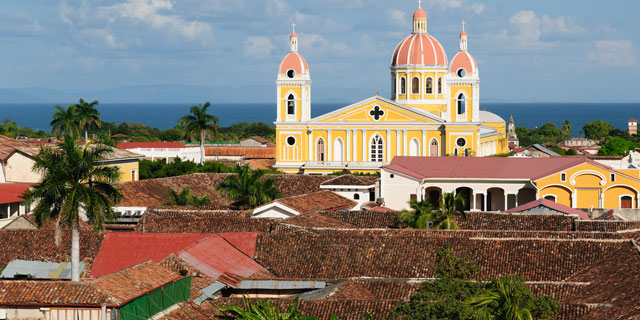From rondon to nacatamal, we're eating our way through Nicaragua. Join us for a foodie's introduction to the country.
“We Nicaraguans have a tendency to view life in full color, not in black and white,” said Cristina Gomez, executive chef of Restaurante El Segundo in Managua, Nicaragua. “That's exactly how we approach our food, too. It is the closest bridge that allows us to reach pleasure and happiness.”
Gomez, whose love of all things culinary–from the pleasures of cooking to the rituals of eating with family–began at an early age, explains that for a relatively small country, Nicaraguan food is colorful, complex, and diverse, though it's often mischaracterized as unsophisticated.
In addition to homegrown produce, such as corn, and fish and seafood caught right off its own coasts, Gomez explained that Nicaraguan cuisine has always been enriched by the products and influences that have passed through the country because of its geographical location.
“Our food is as picturesque as the country's landscapes,” she said, “full of many tastes, smells, and textures.” Dishes draw from local ingredients, such as achiote, pork, and tomato, as well as coconut milk and root vegetables, such as yuca. “We're blessed as a country,” Gomez said, “surrounded by water, with fertile land, and people who continue to uphold a love for the land.”
We asked Gomez to take us on a tour of Nicaraguan cuisine, showing us three of the country's most iconic dishes. She did one better, taking us on a literal recorrido of Nicaragua, where favorite meals are inextricably tied to particular places.
Next, where you can enjoy three classic dishes… [pagebreak]
Three Classic Dishes
The Dish: Rondón
The Region: Caribbean coast
What It Is: “Nicaragua's Caribbean coast is known for its lobster, shrimp, and seafood, and many of its dishes are based on coconut, plantains, and root vegetables like malanga,” said Gomez. “Without a doubt, the most popular dish in this region is rondón,” which blends almost all of these ingredients. Rondón, she explains, is a soup featuring seafood, coconut, and plantain. “This area still preserves African influences,” said Gomez, “and these are recognized in the area's culture and food, which are distinct from the rest of the country.”
Where to Eat It: “Anywhere on the coast is special for rondón, but the most special is on Corn Island, at the Comedor de Mama Lola,” said Gomez. “It's not that she has a particular recipe that makes her rondón the best, but that she's there making it, explaining how it's done, and introducing the 'secret' ingredients. And in reality the only 'secret' is the enthusiasm she adds to her rondón."
The Dish: Nacatamal
The Region: Pacific coast; central interior
What It Is: The Pacific and central regions of Nicaragua are where you'll find livestock farms and fields planted with basic grains, beans, and corn. It's this last ingredient that's featured in the nacatamal, a Nicaraguan tamale made from a base of corn masa and achiote, pork fat, and pieces of pork and wrapped and steamed in a chagüite leaf. It sounds heavy–and it is–but it's traditionally eaten at breakfast rather than lunch or dinner.
Where to Eat It: “The best place in Managua for a typical Nica breakfast is La Cocina de Doña Hayde, in Altamira,” said Gomez.
The Dish: Baho
The Region: Managua and Masaya
What It Is: “The base of this dish is beef, yuca, and ripe plantain,” said Gomez. “It takes two days just to prepare it, since you have to salt the meat and then place it in a pot covered with chagüite leaves. The yuca, plantain, and generous amounts of tomato and onion are added and are covered with more chagüite leaves before being cooked for two hours.”
Where to Eat It: Gomez recommends trying baho at the Mercado de Antiguedades in Masaya.


![Making Mealtime Matter with La Familia: Easy Sofrito [Video]](https://thelatinkitchen.com/wp-content/uploads/2015/10/sofrito-shutterstock__0-500x383.jpg)
![Easy Latin Smoothies: Goji Berry Smoothie [Video]](https://thelatinkitchen.com/wp-content/uploads/2015/12/goji_berry-shutterstock_-500x383.jpg)
















![Fun and Fast Recipes: Fiesta Cabbage Salad [Video]](https://thelatinkitchen.com/wp-content/uploads/2015/11/fiesta_cabbage_slaw-shutterstock_-500x383.jpg)









